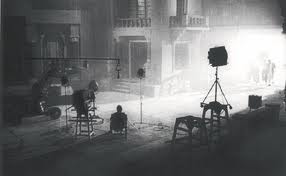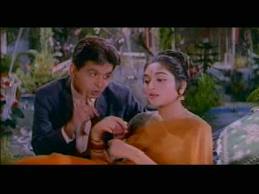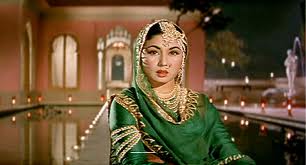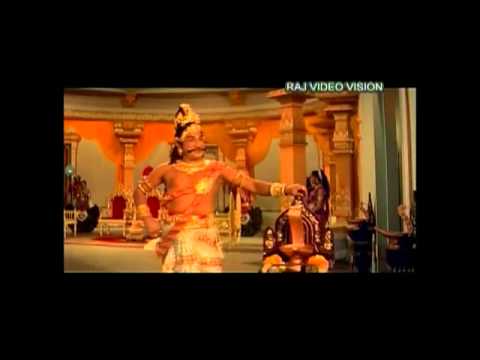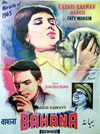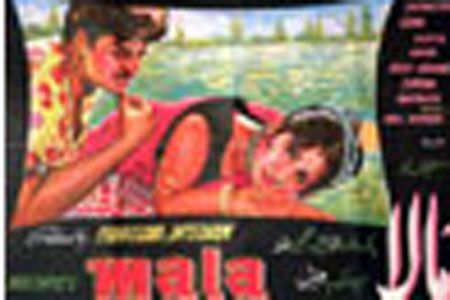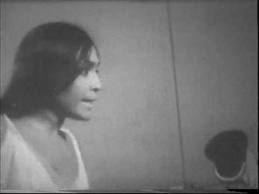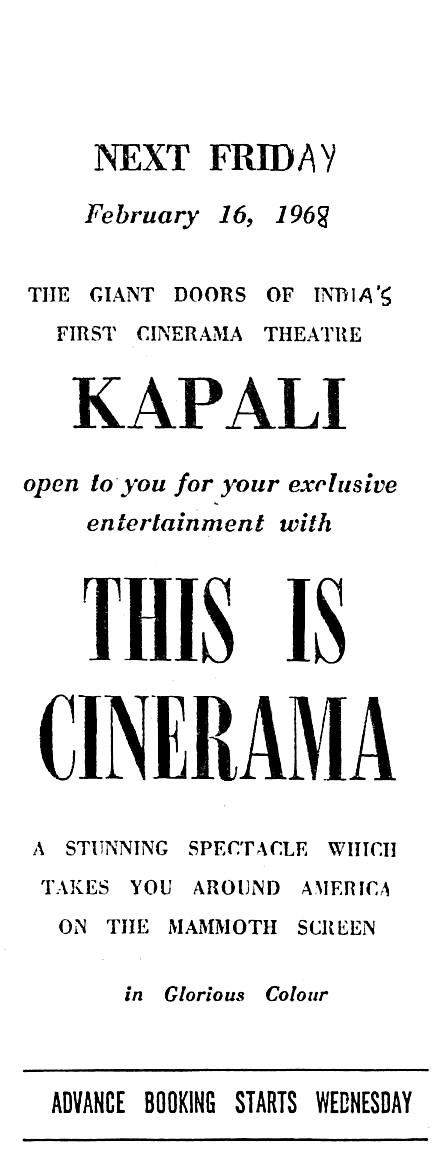CinemaScope films in Bangladesh, India, Nepal, Pakistan, Sri Lanka
Contents |
Part 1: CinemaScope films in Bangladesh, India, Nepal, Pakistan, Sri Lanka
CinemaScope films in India
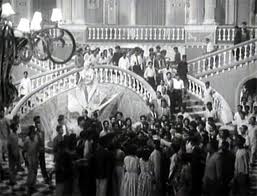


Roots in the USA and the USSR
‘The Robe’ (USA, 1953/ 20th Century-Fox/ Colour) was the world’s first motion picture to be filmed in wide-screen 35mm, CinemaScope. The original trailer had Darryl F. Zanuck, Vice President, Production, 20th Century-Fox, explaining what CinemaScope was and how it worked.
In 1956, Aleksandr Ptushko (born in Lugansk, Ukraine) released Il'ia Muromets, the first Soviet film shot in stereo and for the wide-screen (SovScope).
Indian cinema got off to a very early start with this new technology, thanks to a collaboration with the USSR's Mosfilm Studios.
The 1950s
The bilingual Indo-Soviet film ‘Pardesi’ (Hindi-Urdu/ Russian/ dirs: Khwaja Ahmad Abbas, Vasili Pronin) was released in 1957. The film is called ‘Khozhdenie za tri morya’ in Russian and its subtitled English version is known as ‘Journey Beyond Three Seas.’ India’s first wide-screen film was in SovColor. However, even though it starred Nargis, the most successful heroine of the time, this biopic about Afanasi, a 15th century Russian explorer in India, did not get a release beyond left-leaning arthouse cinemas. T-Series has released the film on DVD. The wide-screen SovScope format is intact but only a black and white print survives.
(Till the late 1960s many A grade, big budget [e.g. Saawan ki Ghata] as well as B+ films [e.g. Spy in Rome] were shot in 35mm and colour but released several prints in black and white and 16mm for rural markets and complimentary screenings at open-air defence amphitheatres.)
In 1957 actor-director Guru Dutt purchased from 20th Century Fox the technology needed to make a CinemaScope film—Gouri, a Bengali film with him in the lead opposite his real-life wife, the singer-actress Geeta Dutt. According to a cinema historian, “By 1957, [their] marriage had run into rough weather and was on the rocks. Guru Dutt had fallen for his new leading lady Waheeda Rehman. The breaking up of [their] marriage also began having repercussions on [Geeta Dutt’s] career. To quieten things down Guru Dutt launched a film Gauri (1957).”[1] Some of the film was shot in and around Calcutta and two songs were recorded. However, Guru Dutt decided to stop making Gouri, presumably because of the domestic situation. He launched Kaagaz ke Phool instead, with Waheeda Rehman.
‘Kaagaz Ke Phool’ (Hindi-Urdu, 1959) was India’s second CinemaScope film and was filmed in black and white, in technical collaboration with 20th Century Fox. It had an aspect ratio of 2.35: 1. This film was widely released, got excellent reviews from the minuscule literati--and scathing ones from vastly more influential bimbos like Babubhai Patel. Its soundtrack album was a success (and, like the film itself, a cult favourite to this day). However, ‘Kaagaz Ke Phool’ flopped at the box office, because the subject was considered too heady (and, to quote Dutt's friend Dev Anand, depressing) for the 1950s.
CinemaScope,thus, had a very shaky start in India.
The 1960s
Initially, CinemaScope was an expensive technology--not so much for the film's makers (who only needed to hire a fancier camera) as for the cinema halls, each of which had to get new projection lenses and, more important, invest in new widescreens. Only such Indian cinema halls as screened English-language films (and, therefore, catered to the Indian elite) had CinemaScope projectors, lenses and widescreens. Therefore, it is a curious fact that India’s third CinemaScope film, ‘Pyar ki Pyas’ (Hindi-Urdu, 1961),which was in Gevacolour, was a low-budget family weepie. This film, too, tanked without the new screen technology getting noticed by the Indian public.
That was when the Moguls of Indian cinema stepped in. Mehboob Khan was a communist (his company’s logo was the hammer-and-sickle) who used to make the biggest budget films of the era. His ‘Aan’ (Hindi-Urdu, 1953), was the first Indian film to be shot in the extremely expensive Technicolor.(Aan was shot in 16 mm and later blown up to 35 mm.) Khan followed it up with the 172-minute, Technicolor, multi-star blockbuster ‘Mother India’ (Hindi-Urdu,1957). Therefore, it was only logical that his next film, ‘Son of India’ (Hindi-Urdu,1962) would marry the two pricey technologies to become India’s fourth CinemaScope film and the first in Technicolor.
However, ‘Son of India’ was another arthouse film and, uncharacteristically for a Mehboob Khan opus, featured only unknown actors. Once again CinemaScope failed to draw audiences. The Indian film industry gave CinemaScope one last chance. ‘Leader’ (1964) featured the biggest star of the era, was shot in Technicolor and was a mega-budget entertainer. However, the jinx surrounding CinemaScope (renamed Filmalyascope for this film) continued. If ‘Son of India’ was Mehboob Khan’s first disaster (and the last film that he ever made), ‘Leader’ was the first of a series of flops for the thitherto hyper-successful Dilip Kumar. (Incidentally, the failure of ‘Kaagaz Ke Phool’ had shattered its director Guru Dutt.)
Indian cinema gave up on CinemaScope—for the rest of the decade.
The 1970s: Hindi-Urdu cinema
Then, in 1972, came Kamal Amrohi's ‘Pakeezah’(Hindi-Urdu), which was the second biggest grosser of the year and the first Indian CinemaScope film to make money. However, its mega success was attributed to other factors and CinemaScope continued to have no takers in Hindi-Urdu cinema.
(Amrohi had always been something of an innovator. He made the offbeat Daera (1953)in which the lead pair do not so much as meet till the film's last sequence. Such lack of romance was unthinkable in Indian cinema till the 21st century. Thus, only Amrohi could have had the nerve to revive CinemaScope when the Moguls of the Indian film industry had banished it.)
South Indian (and other Indian) cinema
India’s Tamil and Telugu film industries are, on some counts, as big as the commercially better-known Hindi-Urdu cinema. Like their counterparts in Bombay (now Mumbai) they make big-budget entertainers. Filmmakers in Tamil Nadu and Andhra Pradesh were more impressed by the success of ‘Pakeezah’ and it was in South India that CinemaScope struck roots. The historical epic, ‘Rajarajacholan’ (1973) was the first CinemaScope film in Tamil,the freedom struggle blockbuster ‘Alluri Seetharama Raju’ (1974) the first CinemaScope film in Telugu , 'Sonbai ni Chundadi' (1976, dir Girish Manukant) the first in Gujarati, ‘Sose Thanda Soubhagya’ (1977) the first in Kannada , ‘Thacholi Ambu’ (1978) the first in Malayalam, ‘Hisab Nikas’ (1982, d Prashanta Nanda)the first in Odiya and 'Jeevan Surabhi' (1984/ dir: Naresh Kumar) the first in Assamese. Vairi-Jatt (1985) is arguably India’s first Punjabi language film in CinemaScope; Jaspal Bhatti’s Mahaul Theek Hai (1999) claims to be the first CinemaScope comedy in Punjabi (India). The first CinemaScope film to be made in Marathi was Dhadakebaaz (1990) by Mahesh Kothare. Hal Ta Bhaji Haloon was perhaps India’s first colour and CinemaScope Sindhi film.
By the late 1970s the majority of big-budget Tamil and Telugu films, and many in Kannada, were being made in CinemaScope.
Hindi-Urdu cinema, which had started the trend, was slow to catch on this time around.This started changing with the success of ‘Dulhan Wahi Jo Piya Man Bhaaye’ (Hindi-Urdu, 1977) a low budget CinemaScope film that was the 8th biggest hit of the year.
By the mid 1980s all big-budget films in India, and by the early 1990s all Indian films (and most South Asian films) irrespective of language, genre or budget, were being made in CinemaScope.
CinemaScope films in Bangladesh and Pakistan
East Pakistan is credited with the two major film-technology firsts of Pakistan (and, therefore, Bangladesh). Not only was East Pakistan (the present Bangladesh) more populous than the then undivided nation’s western wing, almost everyone in the East spoke Bengali, giving it a market several times as big as West Pakistan's.
West Pakistan (the present Pakistan), on the other hand, was divided into four major languages, with a fifth, Urdu, enjoying importance disproportionate to the number of its speakers. Urdu was the official language, the language that linked the five linguistic groups of undivided Pakistan and the language (wrongly) considered more sophisticated and suitable-for-literature than the other languages of at least West Pakistan.
Zahir Raihan (1935-c.1972) was an unlikely pioneer of Pakistan’s Urdu cinema. Not only was he a Bengali, he graduated with BA (Honours) in Bangla (Bengali) from the University of Dacca (now Dhaka). On the 21st February 1952 he was one of ten students who defied the ban on the now-historic Language Movement—which had since 1948 been demanding that Bangla be made one of the state languages of Pakistan. Many youths were killed on that fateful day. Zahir was sent to jail.
And yet Zahir was the maker of Pakistan’s first colour film Sangam (April 23, 1964), and also of its first (black & white) CinemaScope film Bahana (1965), both in Urdu. (The Indian magnum opus Sangam, in the making since 1962, was released a few weeks after its Pakistani namesake.)
Mala (Bengali/ 1965), also produced in erstwhile East Pakistan (by Dosani and Mustafiz), was the first film made in CinemaScope and colour in undivided Pakistan (and, thus, Bangladesh).
Lakkha (September 22, 1978) was the first CinemaScope film in Pakistan’s most widely spoken language, Punjabi. By then almost all Pakistani films were being shot in colour.
Syed Kamran Haider’s Zero Point (2012) was the first Sairaiki film in CinemaScope and Dolby Stereo.
Yousaf Khan Sher Bano (1970/ 71; writer: Ali Hyder Joshi; director: Aziz Shamim)) was the first Pashto film. Today most Pashto films are released in CinemaScope.
CinemaScope films in Nepal
Paral ko Aago (1978) was arguably the first Nepali CinemaScope film
CinemaScope films in Sri Lanka
Dr. Diego Badaturuge Nihalsinghe brought CinemaScope to Sri Lanka through Ketikathava, a short film. In 1971 he made Welikathara , the country’s first 35mm CinemaScope feature film
Cinerama theatres in India, Pakistan, Sri Lanka

Cinerama was a 3-strip, three-projector technology. Each 35 mm projector ran one third of the image, which was projected on a screen that had a 146° arc, and was much bigger than the 70mm widescreen. How the West Was Won (1962) is the most famous Cinerama feature ever, followed in popularity by an entertaining documentary ‘This is Cinerama’ (1952).
Like Imax after it, 3-Strip Cinerama concentrated on documentary films and only two features were ever made. The other feature, The Wonderful World of the Brothers Grimm (1962)was a biopic.
In 1965 a trial screening of the Cinerama print of How the West Was Won in New Delhi was not successful, with the three projectors not synchronising.
On 16 February 1968, Bangalore got India’s first Cinerama theatre, Kapali. It had a louvered 84ft by 32ft screen, and 1,500 seats, almost one and a half times as many as at Delhi’s biggest, Shiela. Kapali first screened This is Cinerama and then Seven Wonders of the World.
Karachi’s Capri opened five months later, on 26 July 1968, with a 35mm film projected on its 70ft by 30ft Perlux screen. An international register of Cinerama theatres notes that ‘no known Cinerama presentations’ were screened at Capri. [2]
The only other Cinerama theatre in South Asia was Colombo’s New Theatre, about which the same authority has no further details. Many countries around the world never constructed a Cinerama theatre, and many just one each.
The cumbersome three-projector Cinerama gave way to single-film 70 mm Cinerama. It's a Mad, Mad, Mad, Mad World (1963), which was filmed in Ultra Panavision 70, was the first of the lot, and a commercial success. A number of successful films were filmed in Ultra Panavision 70, but projected instead on normal widescreens made for 70 mm. Slowly this technology, too, disappeared.
3D
The first 3D film produced in India, My Dear Kuttichathan (1984), was made in Malayalam. Following its phenomenal commercial success it was dubbed into Hindi and released in 1985 as Chhota Chetan. Shiva ka Insaaf (1985) was the first 3D film made-for-Hindi. The 3D trend petered out after that, only to be revived, and brought right into the mainstream, by the success of the Hollywood blockbuster Avatar (2009).

